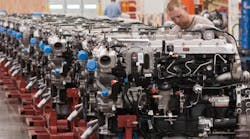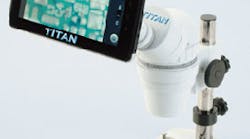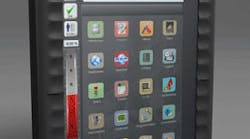The results of the fourth annual American Foundry Society Casting Competition were announced recently at the 108th Metalcasting Congress in Rosemont, IL, a joint presentation of AFS and the North American Die Casters Assn.
According to AFS, the competition drew over 40 components and featured every significant type of metal and all the standard casting processes. The designs were developed for customers in all of the leading customer markets, including automotive, military, construction, agriculture, medical, and electrical.
The top design, the 2004 Casting of the Year, is the hollow rear lower control arm designed for BMW by Alcoa Automotive Castings Inc., Farmington Hills, MI, and Farsund Norway.
This aluminum component was produced by the vacuum riserless/pressure riserless casting process, and it represents a 40% reduction in mass over a fabricated steel control arm, and up to a 30% reduction compared to a solid aluminum one. Installed on the BMW X5 SUV, 5- and 7- Series sedans, , 5-Series Touring Wagon, and Rolls Royce, it is said to improve vehicle ride and handling by reducing “un-sprung mass.”
The contest also recognized five designs as Best-in-Class and awarded Honorable Mention designation to five more.
The five Best-in-Class awards were presented to:
- Denison Industries, Denison, TX. Denison designed an air house inlet for an off-road military vehicle. This aluminum sand casting facilitates close adherence to the cost and weight restrictions on the component. Due to the size of the casting (nearly 6 ft. high) and wall thickness, Denison maintained tight process controls to ensure directional solidification for accurate mechanical properties.
- The Dotson Co., Mankato, MN. Dotson developed a rear chute pivot for concrete mixer trucks. This ductile-iron casting equaled the weight of the nine-piece steel weldment, plus the shaft, that it replaced, and it reduced th cost by $72 per part. Ribs were added for extra strength in hot spots, and holes were installed in non-critical areas to reduce weight further.
- GM Powertrain, Massena, NY. This design is an inline-four automotive engine cylinder block that will replace several GM blocks, with much higher power and torque than the prior models. Also, it improves fuel economy, reduces emissions, adds horsepower, and reduces noise and vibration. It is produced by the lost-foam process and the design includes a number of cast-in details that reduce machining time.
- Intermet Corp., Palmyra (MO) Plant. This housing for a computer network storage unit is cast in magnesium and replaces an eight-piece sheet metal fabrication. It is 25% lighter than the unit it replaces, is assembled in half the time, and reduces the tooling costs significantly.
- Piad Precision Casting Corp., Greensburg, PA. This design, an adapter for power pallet trucks, is a yellow brass casting that replaces a 13-piece aluminum fabrication. It is produce at one-quarter of the cost of the part it replaces, despite using a more expensive material, and it increases throughput and simplified procurement significantly.
The five Honorable Mention awards were presented to:
- Aristo Cast Inc., Almont, MI. This aluminum component, a swing arm for an unmanned military vehicle, was produced by rapid prototyping. The first two components were delivered 16 calendar days after the date of the order.
- Elmira Pattern & Foundry Co., Elmira Heights, NY. This casting is 750-hp permanent magnet brushless motor. A stainless steel cooling coil was cast-in to keep the motor cooler, thus to run more efficiently. Also, 496 heat sink pins were cast-in to cut down on machining.
- Fansteel/Wellman Dynamics, Creston, IA. This magnesium casting is a main transmission housing. It was consolidated from a five-piece WE43 fabrication, saving 30% in total cost and lowering the scrap rate by 40%.
- GEN Manufacturing Ltd., Coaldale, AB. This design is a dual-delivery seed and fertilizer tool. The curvature and angles involved in the design favored a casting over a welded assembly, and saved 20% in manufacturing costs vesus the welded unit.
- Irish Foundry & Manufacturing, Seattle. By adopting a lost-foam casting process, production of this home-heating/water-heating burner overcomes the need for cores and chaplets, and it allows the foundry to cast in 211 gas-burner holes (0.125 in. diam., 0.34 in. long.)



